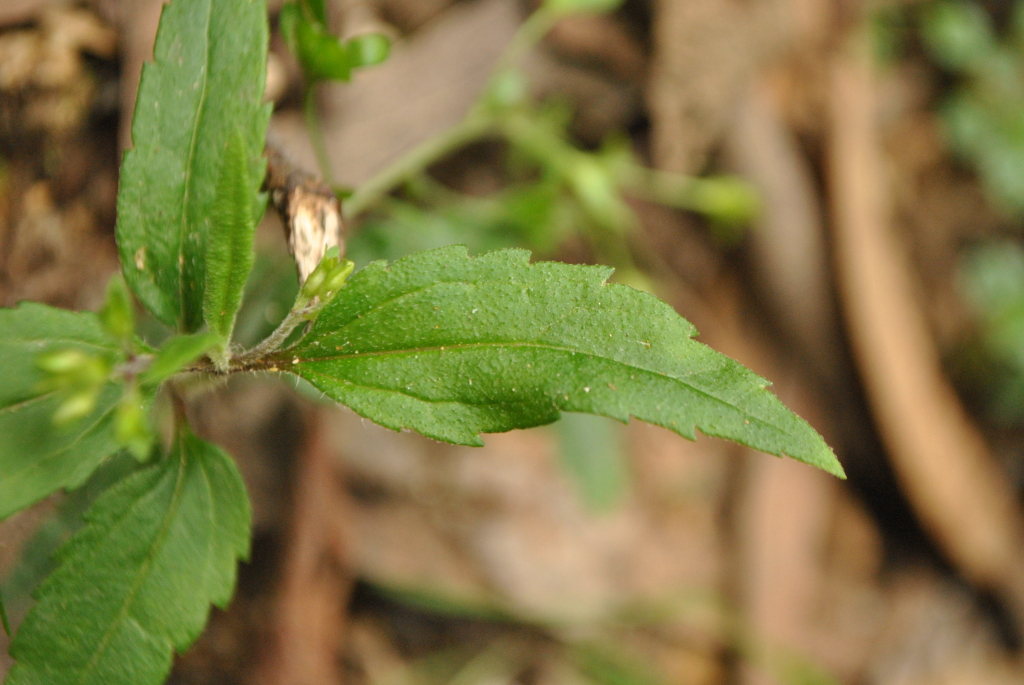Veronica notabilis
F.Muell. ex Benth. Forest SpeedwellStoloniferous perennial; flowering stems to 40 cm high, hairs long, soft, spreading or antrorsely curved, cells of the hairs often collapsed. Leaves ovate to narrow-ovate, mostly 3.5–6 cm long, 10–25 mm wide, apex acute, base cuneate, margins with 5–12 pairs of antrorse or spreading teeth; petiole 6–17 mm long. Racemes lateral, mostly 5–17.5 cm long, 10–20-flowered; peduncle 1–7 cm long; bracts 3.5–10 mm long; fruiting pedicels spreading or upcurved, 5–17 mm long. Calyx-lobes 5–7 mm long, 2–2.5 mm wide in fruit, with short curved hairs on margins but usually c. glabrous towards apex; corolla 4–8 mm long, lavender or white with darker veins. Cap-sule obcordate with rounded lobes, 4–5.5 mm long and slightly broader, glabrous, glossy; style c. 3–4.5 mm long. Flowers spring and summer.
GipP, OtP, CVU, EGL, EGU, WPro, HSF, HNF, OtR, Strz, MonT, HFE, VAlp. Also NSW, Tas. Moderately common in tall eucalypt forest, mostly east of Melbourne, but also Otway and Macedon Ranges.
In the eastern part of its range, this species occurs with the closely allied Veronica grosseserrata, which grows in similar habitats, and intergrades are common.
Briggs, B.G.; Barker, W.R. (1999). Veronica. In: Walsh, N.G.; Entwisle, T.J., Flora of Victoria Vol. 4, Cornaceae to Asteraceae, pp. 509–516. Inkata Press, Melbourne.
 Spinning
Spinning

